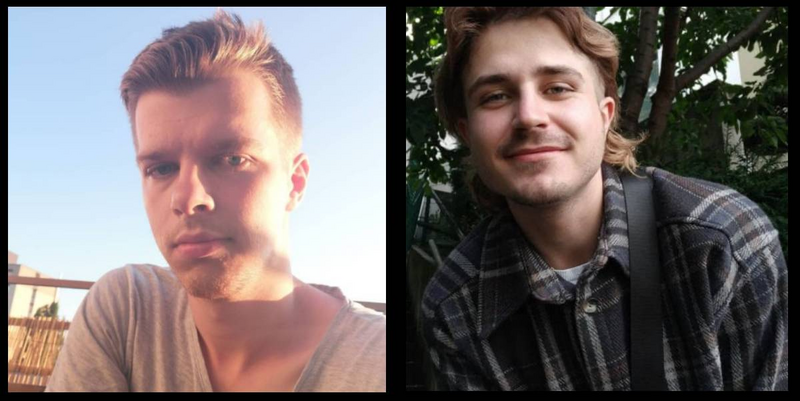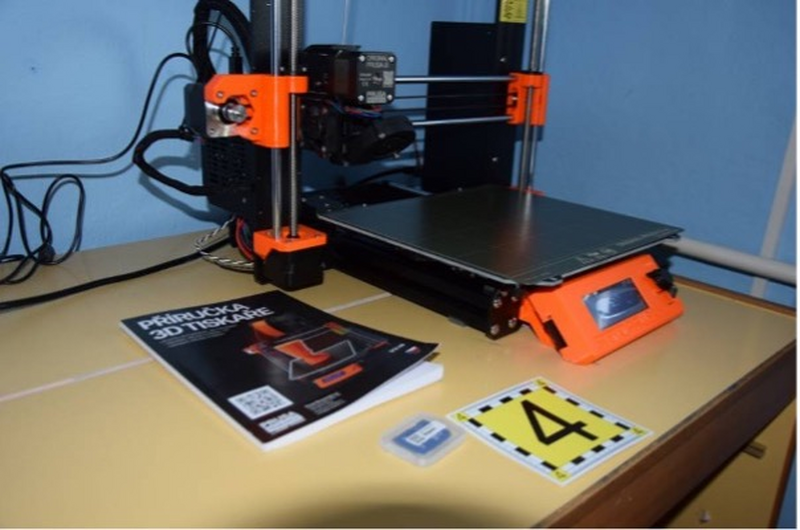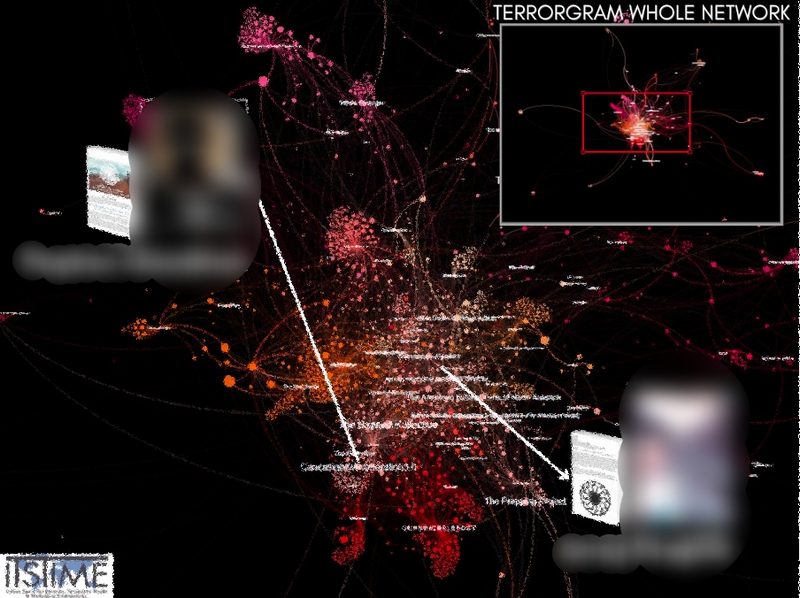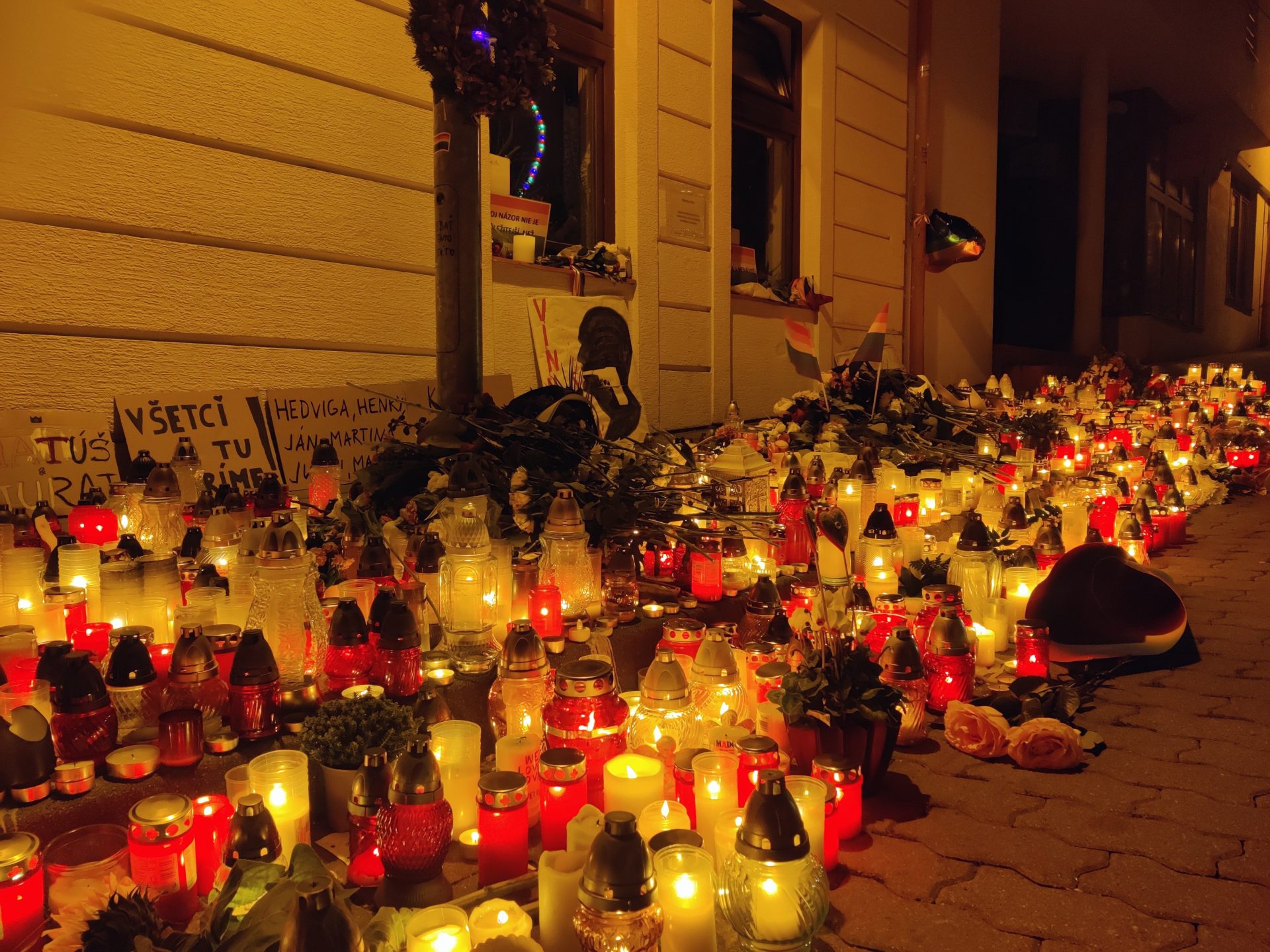Illustration: Wikimedia Commons 2025-04-03
Illustration: Wikimedia Commons 2025-04-03
A young man convicted of extremism, appearing on Telegram under the nickname “Slovakbro,” communicated intensively with the Tepláreň murderer as early as 2019, findings by Investigative Center of Ján Kuciak (ICJK) and American investigative journalists from PBS FRONTLINE and ProPublica show. During the terrorist attack on the LGBTI+ bar Tepláreň in October 2022, Juraj Vankulič and Matúš Horváth lost their lives. Their friend Radka Trokšiarová was injured by the attacker. As it turned out, the murderer was radicalized online by leaders of the Terrorgram collective group. Slovakbro was one of the leading figures. (FRONTLINE and ProPublica filmed a documentary about the findings, which premiered in the USA on February 25, 2025.)
“Hey buddy, let’s fight.”
“I’ll think about it.”
This conversation appeared in Slovak in a discussion on a Telegram channel of radicals in September 2019. On one side, an extremist and founder of the channel, the then-19-year-old Slovak nicknamed Slovakbro; on the other, a 16-year-old high school student from Bratislava who would later be known as the Tepláreň murderer, Juraj Krajčík.
We managed to identify the profile under which Krajčík participated in discussions in cooperation with American colleagues from FRONTLINE and ProPublica, who provided us with archived Telegram communication records.
Prior to that exchange, discussions on the channel— filled with hatred towards Jews, Muslims, the LGBTI+ community, and sometimes featuring instructions for terrorist attacks or explosives manufacturing — were conducted only in English. This channel was part of Terrorgram, a secret corner of the almost uncontrolled Telegram social network, where extremists could spread ideas of militant accelerationism and white supremacism.
The future Tepláreň murderer actively participated in discussions beginning in August 2019. Among his peers, according to psychologist Marek Madro, who spoke with several of his classmates, he felt unheard, and so spent a lot of time in online chats. As a victim of bullying, he was transferred to a new school.
In online discussions, he did not hide radical views.Krajčík posted a photo of Ľubomír Harman, who murdered seven people in Devínska Nová Ves in 2010, and photos from a climate protest at Freedom Square in Bratislava in September 2019.
The same day he also posted a photo of the LGBTI+ bar Tepláreň with a hateful comment: “I passed by and photographed *****s and ****s,” he wrote to his compatriot, nicknamed Slovakbro, on September 20, 2019. This continued a discussion about Tepláreň from two days prior, when he had shared a link to an article from Queer Slovakia. “Copeland moment,” responded Slovakbro, referencing British neo-Nazi David Copeland, who planted a nail bomb in an LGBTI+ bar in London in 1999, killing three people and injuring 80.
“Actually, not a nail bomb,” Slovakbro continued, suggesting hell was better than what he actually meant.
Another Terrorgram participant added: How about a bomb with “nails + ricin + chemicals?”
“Just reminding you that would immediately cause federal agents to appear behind you and arrest you,” Krajčík warned.
Slovakbro then complained that the country he lives in doesn’t produce enough “saints”—perpetrators of mass hate terrorist attacks, called “saints” on Terrorgram. Whether he suspected his 16-year-old compatriot, a gifted student, would become a “saint,” i.e., a terrorist attacker, is unclear. When contacted via his former lawyer, he refused an interview.
Together with other Terrorgram leaders, “Slovakbro” participated in Krajčík’s radicalization, leading to the terrorist attack on Tepláreň on October 12, 2022, killing Juraj Vankulič and Matúš Horváth and injuring Radka Trokšiarová.

Victims of the terrorist attack: Matúš Horváth and Juraj Vankulič. Source: Facebook, Instagram
“I can’t see into those people’s heads and I would really like to understand what is actually the idea — that I’m going to take a weapon and start shooting people. I don’t understand that. I will never understand and I’m glad for that. I would like to normally talk to such a person — like why?” said Radka Trokšiarová two years after the attack.
“Since 2019 I have been slowly preparing: collecting targets, researching and monitoring them, reading about tactics and strategy,” the Tepláreň murderer wrote in a manifesto published after the attack.
Did he lie to investigators?
During the investigation into the Tepláreň attack, Slovakbro, who is serving a six-year prison sentence for extremist criminal offenses, told authorities that he did not know the murderer and that they had only exchanged a few private messages.
“We questioned him about it and he said they had only brief communication,” said former special prosecutor Daniel Lipšic, who supervised the Tepláreň case.
Our findings, however, suggest that they had been communicating intensively since at least 2019.
In autumn 2019, in Terrorgram channels set up by Slovakbro, he communicated with, among others, two Slovaks and a U.S. Army serviceman from Kansas, Jarrett Smith. In these discussions, Smith called for bomb attacks on power plants, cell towers, or gas pipelines, or on representatives of law enforcement authorities. “They deserve to be shot. They are the enemy,” he wrote in one discussion thread, unaware that, within a few days, he would engage in a private conversation with an agent posing as an extremist.
On September 21, 2019, Smith was arrested by the FBI. He later confessed to disseminating instructions on how to make bombs and napalm, and was sentenced to 30 months in prison.
In the extremist Terrorgram groups, a feverish debate erupted a few days after his arrest. “Never talk to people who want to discuss (((plans))) for illegal activities with you,” wrote the future Tepláreň murderer. Slovakbro then changed the channel to private and, in the following days, deleted inactive users and chat history. Whereas a few days earlier they had communicated openly and in Slovak, after Smith’s arrest, Slovakbro warned users in the extremist channels to remove their real names from user accounts and write only in English. Krajčík also gradually withdrew from communication. This is base on the chat records provided to us by our American colleagues from FRONTLINE and ProPublica.
We wanted to know whether U.S. authorities at the time were aware of the Telegram channels in which Smith conversed with other extremists, including two Slovaks, and whether they could have known as early as2019 about discussions regarding an attack on Tepláreň. But the FBI repeatedly declined our American colleagues’ requests for interviews.
WHAT IS MILITANT ACCELERATIONISM? – Matej Medvecký, expert on right-wing extremism, historian at the Military History Institute: “Militant accelerationism is a set of tactical procedures and strategies aimed at creating pressure and exacerbating latent social differences, often through violence, to accelerate the collapse of society. That’s the characterization from the Center for Accelerationism Research. I would like to add that it is one of the latest and most radical components of the current national socialist movement, and the goal of militant accelerationists is to achieve the fall of current society through terrorist attacks and to provoke chaos, from which a new order is supposed to emerge. In it, the Aryan race would rule the world and society would be based on racial principles and national socialist ideology. Accelerationism draws on the ideas of American neo-Nazis Joseph Tommasi, William Pierce, and James Mason.”
Slovakbro, leader of Terrorgram
“The police arrested the accused 22-year-old citizen of the Slovak Republic. According to police findings, he is believed to sympathize with the neo-Nazi alternative far right, promoting the ideology of militant accelerationism … The accused was believed to have operated in the cyber environment of the international far right under the nickname Slovakbro,” the police wrote on Facebook on May 13, 2022.
The Slovak was accused of hundreds of acts committed on Telegram — besides extremist expressions, these included spreading instructions for how to make explosives and manufacture weapon parts with a 3D printer. All the acts were from 2021 and 2022. Slovakbro was uncovered thanks to information from the American FBI. Slovak police and prosecutors used this case to learn how to secure evidence that would also stand up in court in online extremism cases.

“He was an excellent student at a bilingual gymnasium where the second language was English,” said prosecutor Peter Kysel, who led the team in the Slovakbro case. “He used English as a native language, used a lot of slang expressions associated with right-wing extremists, neo-Nazis, and militant accelerationism,” Kysel added.
As Slovakbro told the police after his arrest, he began falling into the trap of right-wing extremism during high school, sometime around 2015. Two years later, he was already listening to a podcast by American neo-Nazi Christopher Cantwell, also known as the “crying Nazi.” At the same time, he got on Telegram, an unmoderated platform where all kinds of illegal content appeared and remained almost untouched.
In 2019, Slovakbro was already operating Telegram channels that spread hateful and supremacist propaganda and called for violence. Around that time, he also connected with Canadian Matthew Althorp from Ontario, who founded the channel Terrorwave Refined.
And so a network of channels called Terrorgram was created. Within a few months, it grew from seven to 20 channels with thousands of supporters. Slovakbro claimed to Slovak authorities that he did not come up with the name Terrorgram, but that he included his channels in the group because they had common interests and wrote about the same things. Some of the channels the young Slovak administered had up to 5,000 followers at the peak of their popularity and held major influence in the radical community determined to commit terrorist attacks.

“I would say he was a key architect of Terrorgram,” said Rebecca Weiner, Deputy Commissioner for Intelligence and Counterterrorism at the New York Police Department, to FRONTLINE and ProPublica. Her unit monitored Terrorgram for years and assisted the FBI in investigations. Psychologist Marek Madro from the IPčko counseling center, which also deals with youth radicalization and deradicalization programs agrees with Weiner. “He had a huge influence, he was one of the creators of that philosophy, that ideology, and I think his influence is much greater than we realize here in Slovakia. Several young people we consider at risk refer to his work,” said Madro. Psychologists recently worked with 10 to 15 young Slovaks inclined to militant accelerationism.
Slovakbro studied at the Brno University of Technology and spent most of his day in his dorm room at his computer in Terrorgram groups. “He had no real-life meetings with anyone from the online groups,” said prosecutor Peter Kysel.
Slovakbro and Althorp became influencers of militant accelerationists, and to push their propaganda machine further, they created a group called the Terrorgram Collective. One of Terrorgram’s propaganda tools was declaring white mass murderers to be “saints.” They took the perpetrators of attacks supporting white supremacy, neo-Nazism, and other variants of the same ideology—with the goal of killing “enemies of the white race”—and made them into role models. These included Brenton Tarrant, who, in 2019, killed 51 Muslim worshipers in New Zealand, and Timothy McVeigh, who, in 1995, killed 168 people in a bombing in Oklahoma City, USA.
The Terrorgram Collective grew and wanted to look like a large organization. “They wanted to present themselves as a big community, but in reality, it wasn’t such a big group. One person used several nicknames, multiple channels, to make it look like it wasn’t just one, but maybe five or six people,” prosecutor Kysel said of the Terrorgram Collective’s presentation.
They began creating videos and visually appealing publications to promote terrorism and racial intolerance. In just over a year, they created three books and distributed them as PDFs via Terrorgram channels. Slovakbro admitted to Slovak investigators that he wrote several contributions in them. “It’s a real manual on how to commit a terrorist act. A guide to killing people,” said Jakub Gajdoš, an expert on right-wing extremism and terrorism from the police presidium, who also worked on the Slovakbro case.
As findings provided by our American colleagues from FRONTLINE and ProPublica suggest, one of the young followers of the Terrorgram Collective was the Bratislava teenager Juraj Krajčík, who had been active on their Telegram channels since he was 16, admired his compatriot using the nickname Slovakbro, and who, in October 2022, went on a hateful murder spree at Tepláreň in Bratislava.
October 12, 2022
“I heard gunshots, I stood up and looked out the window and saw him running from the place,” Madro recalled. From the apartment on the top floor of the building where the counseling center is located, he had a direct view of Zámocká Street — and the LGBTI+ bar Tepláreň. At that moment, he still didn’t know what had happened, but he soon found out.
“Tepláreň was for me a safe place and mainly a place where I met a lot of good people who helped me. Especially two – Juraj and Matúš, who helped me feel like myself, not to be afraid to be myself,” Radka Trokšiarová said.
That evening, however, after the shots, the bodies of murdered Juraj Vankulič and Matúš Horváth lay in front of Tepláreň, and Radka was hiding inside the venue with a severe leg injury. “I didn’t know if I would survive. I had no idea who was shooting, why he was shooting, whether he was still somewhere, or whether he had left, or it was just quiet — and that’s very terrifying. When you don’t know what is actually happening and you can’t get up to find out what is happening. You don’t have control to get to safety… Sometimes that feeling of hopelessness comes back,” Radka Trokšiarová said, recalling the tragic attack.
The radicalized murderer Juraj Krajčík fled the scene. According to the investigation, Tepláreň was his second target that day. With a loaded weapon legally owned by his father, he had first waited outside the home of then-Prime Minister Eduard Heger, but the prime minister did not appear. As later revealed by the perpetrator’s extensive manifesto, his goal was to spark a revolution in the name of the white race. During his escape, he stopped at home, told his parents what he had done, and fled.
After the attack, in addition to security forces, psychologist Marek Madro also tried to reach Krajčík. He sent the perpetrator SMS messages and tried to communicate with him. “I had his phone number from classmates, and after twelve SMS messages I sent him, he finally picked up. I think it was around three o’clock, 3:04. The call itself lasted about two minutes. It was about clarifying what I was offering, that I was there for him, that I wanted to talk to him, and that he didn’t have to do it. But he kept saying he had to do it,” said Madro, adding that he felt enormous pressure because he already knew about the terrorist attack. “I knew that conversation would be different and I was almost 100 percent sure it wouldn’t end well. To this day, when I hear about that event somewhere, I have a slightly different story than the public or the image of him. He was a frightened boy who repeated his beliefs. He repeated that he had to do it and was very afraid of death, humanly, but at the same time paradoxically brought up that it was necessary, that he had to do it, and I kept telling him it wasn’t necessary to do it. My conversation with him wasn’t about the attack. It was about saving his own life,” added Madro about the moment when the attacker committed suicide.
At the same time, enthusiasm over the murder of two people was spreading through the Terrorgram groups: “Like prophets, they spread the word of hatred and killing, and this was their first student — he spread the gospel of white supremacy through violence. They were thrilled because they could state that they were directly responsible for his radicalization, and they proclaimed him the first ‘saint’ of Terrorgram,” a right-wing terrorism expert told ICJK in 2022 about the developments in radical groups on Telegram.
Twilight of the Terrorgram Collective
“On October 12, 2022, a new Saint rose in Bratislava… the first saint of Terrorgram.” The leaders of the Terrorgram Collective celebrated the perpetrator of the attack in Bratislava. By that time, however, the noose was already tightening around them.
First, in May 2022, Slovakbro ended up behind bars, having confessed to many crimes. Considering his age and a plea bargain, just a few days after the attack on Tepláreň, he received six years in prison.
Until now, however, it wasn’t known that he had communicated with the Tepláreň murderer in 2019, which we uncovered with investigative journalists from America’s FRONTLINE and ProPublica. Multiple sources from law enforcement confirmed they had no such information. U.S. authorities did not comment.
Another member of the Terrorgram Collective, Canadian Matthew Althorp, also ended up in prison. He faces charges of inciting genocide and encouraging terrorist attacks. In September 2024, U.S. authorities arrested 34-year-old Dallas Humber and 37-year-old Matthew Allison, who took over leadership of the Terrorgram Collective after Althorp and Slovakbro were arrested, continuing to use private groups on social media to incite hate crimes in the name of white supremacy and racial war.
According to U.S. investigators, the Zámocká Street attacker in Bratislava was in direct contact with Terrorgram leaders before the attack. According to the indictment, Humber wrote in a group chat that Krajčík was also in that if he became a “saint,” “she would read his book.” The audio version of the manifesto was published just days after the shooting in front of Bratislava’s Tepláreň.
The indictment also states that Humber and Allison were seeking “future saints,” that is, individuals potentially susceptible to radicalization who might carry out terrorist attacks. In mid-March 2022, Humber stated in a group chat that she had targeted a specific Terrorgram member: “He’s about 18 years old and seems very receptive, I’m trying to radicalize him,” she wrote. The Zámocká murderer was 18 at that time. According to his manifesto, he made the final decision to carry out the attack in May 2022.
In January 2025, U.S. authorities designated the Terrorgram Collective a terrorist organization. “The group promotes violent white supremacy, calls for attacks on its enemies, and provides guidance and instructional materials on tactics, methods, and targets of attacks, including assaults on critical infrastructure and government officials. The group also celebrates those who have committed such attacks,” reads the U.S. Department of State decision, which named citizens of Brazil, Croatia, and South Africa as the collective’s current leaders. According to experts, the group has since significantly weakened.
The Terrorgram Collective radicalized the first Slovak terrorist. Juraj Vankulič and Matúš Horváth lost their lives. Slovakbro, one of the group’s main content creators and leaders, could soon be released. “I want to believe that after the attack on Tepláreň, it finally dawned on him,” said a source who met him in high school. But psychologist Madro fears that Slovakia is not prepared in the field of deradicalization: “There is no deradicalization procedure we could apply in further care for him, or for other young people who are being released, because they were, for example, temporarily placed in custody due to investigations. And they come out with the same beliefs — that even in there, no one stopped them — and that somehow confirms their convictions.”
Moreover, the social climate has become more heated, and hatred and attacks have become part of everyday political life. “I’m really sorry that hateful expressions are still here, because I don’t wish anything bad on anyone, I don’t speak badly about people even if I disagree with them. I really believe everyone should live in a way that makes them happy, and that no one should meddle in that. For me, the basic rule is: live and let live,” concluded Radka Trokšiarová, who survived the terrorist attack.
The Slovak version of this investigation was published on ICJK.sk.
Subscribe to Goulash, our original VSquare newsletter that delivers the best investigative journalism from Central Europe straight to your inbox!
Lukáš Diko is the editor-in-chief at the Investigative Center of Ján Kuciak (ICJK). An experienced journalist and media leader, he was previously director of news and journalism at RTVS and editor-in-chief of news at Markíza television.
Karin Kőváry Sólymos is a Slovak journalist at the Investigative Center of Ján Kuciak. Previously, she was an editor and presenter at the Hungarian channel of the Slovak public service media. During her university years, she was an analyst for the only fact-checking portal in Slovakia. She was a recipient of the Novinarska Cena 2022.








